Pros
Cons
Tour
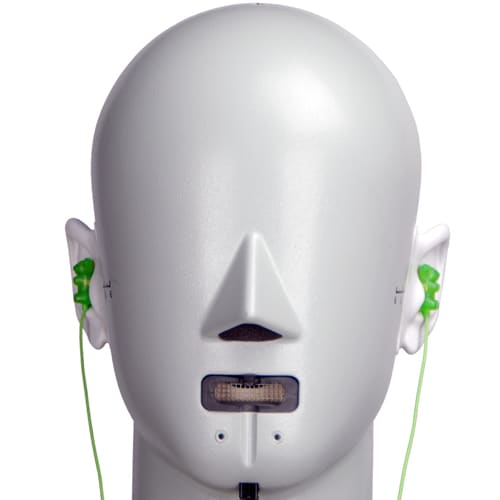
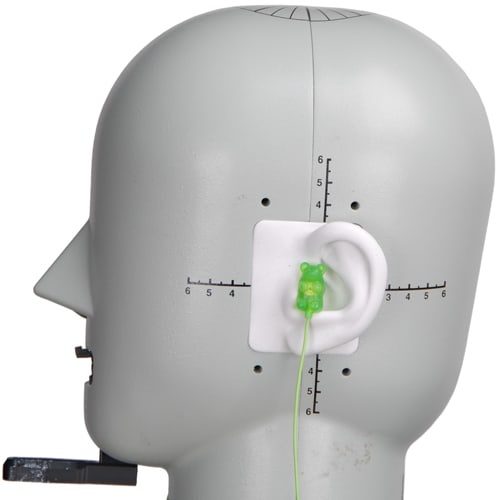
The Sony MDR-DS6000 headphones are predominantly gray. The first thing you may notice is the presence of two different bands.

The outer one is plastic, while the inner one has a rubber coating and has internal springs holding it in place.
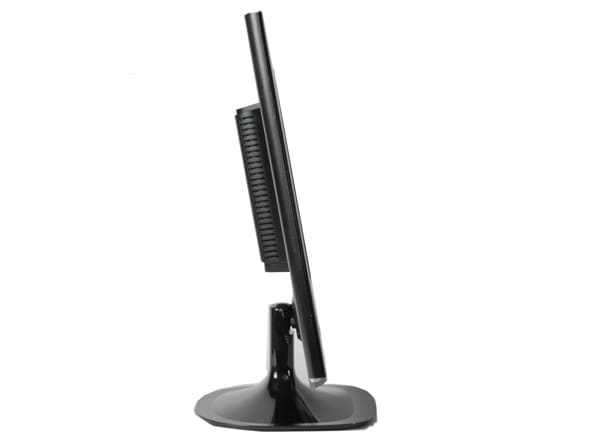
The cups have padding covered by a thin, soft, synthetic leather. There is a definite front and back to these headphones, as the inside of the cup is beveled to allow it to fit snugly around your ears. The batteries can be found in a compartment inside the left cup.

The base station has two indentations in its top where the headphones rest to recharge. Along the front perimeter of the base station are three switches: compression, input, and effect. Around back is where you'll find the different ports, either for audio input or power.

On the base station itself, there are three switches: compression (on/off), input select (analog/digital), and effect (music/off/cinema). Compression means is that, instead of hearing the full dynamic range of whatever you're listening to, loud noises and soft noises both get smushed closer to mid-range noises. This will help you decipher whispers, and avoid getting startled by explosions. The input switch flips between the two inputs; the analog photon inputs and the optical digital one. The effect switch controls the listening mode: music, off or cinema.
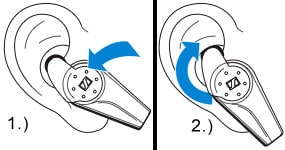
In the Box
{{section_header}}{{section.name}}{{/section_header}}
In the box, you'll find the headphones, the base station, and a power cable. What you won't find is anything at all to connect the base station to an audio output source, such as phono cables or digital ins/outs; a serious omission for a set of headphones designed to connect to a home theater system. This seems rather cheap for a $300 pair of headphones; we would have expected to see at least a cheap set of phono cables so you can plug them straight in.
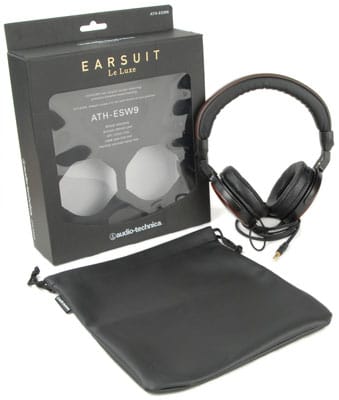
Durability
{{section_header}}{{section.name}}{{/section_header}}
Overall, these headphones seem fairly sturdy. They're made out of plastic that seems robust, and the skin on the padding won't tear easily. It does have a few moving parts, which would be more prone to wear and tear than nonmoving parts: the cups tilt, and the band can extend. The tilting mechanism feels fairly sturdy, though. The band we have more issue with, since it's held in place with springs: when you put these headphones on, your head pulls on these springs. We're not sure how well these springs will hold up over many sessions of wear.
Aesthetics
{{section_header}}{{section.name}}{{/section_header}}
These headphones aren't stunningly handsome, though they do look nice. They're mainly a study of grays, so they'd be appropriate for those who prefer dull, gloomy days to bright sunny ones.
Summary
{{section_header}}{{section.name}}{{/section_header}}

The Sony MDR-DS6000 headphones are a set of wireless headphones with digital surround sound. They also offer compression (so you don't get deafened when the loud bits come on) and music and cinema modes that tweak the sound. This base station requires a wall socket, which means you won't be able to take the DS6000s on a road trip, but the headphones come with a rechargeable battery; all you have to do is place them on the base station and they charge up. We found that the battery lasted about 7 hours and 20 minutes.
Though the DS6000 certainly has some interesting features, it falls short in terms of sound quality, it had small issues with distortion across the frequency spectrum. Also, while it did well emphasizing bassy and lower-midrange tones, higher frequencies are a bit lost. And these headphones weren't particularly comfortable.
The Sony MDR-DS6000 headphones are priced at $399.99 from Sony.
Frequency Response
{{section_header}}{{section.name}}{{/section_header}}
In this test, we look at how well the headphones reproduce frequencies across the audio spectrum, from boomy lows to squeaky highs. Therefore, on the graph below you'll see frequencies (in Hertz) running along the bottom, and the response (loudness, in decibels) down the left-hand side. The green line is the left channel, and the red is the right. The two dotted black lines are the limits that we look for in our scoring; ideally, both the red and green lines should fall between the limits.
For about half the graph, the lines do a good job of sticking within the limits. At around 5-6kHz, however, something dire happens, and the frequency response drops off. At one point the right channel just barely makes it back inside the limits, but then spirals downwards. What this means is that high frequency sounds might sound somewhat muted, and high frequency sounds (such as high hats and squeaky voices) may feel a little lost in the mix.

Distortion
{{section_header}}{{section.name}}{{/section_header}}
Total harmonic distortion is the difference between the initial waveform (the soundwave we send to the headphones) and what HATS ends up hearing from the headphones. Though the DS6000s never really have much distortion until the high frequencies, they have a small amount across the audio spectrum. The worst of it is towards the high-end, but there is a lot of minor distortion across the entire range. This may be caused by the compression that the system uses to send the audio wirelessly, but we unfortunately have no way of tracking this down.
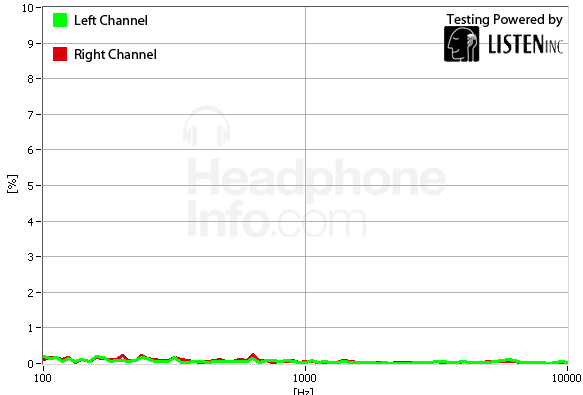
Tracking
{{section_header}}{{section.name}}{{/section_header}}
If headphones have perfect tracking, it means that both ear cups would reproduce all frequencies at equal volumes. Unfortunately, no headphones have perfect tracking, which is why we test for any differences between the left and right channels. On the chart below, above the zero line means the left channel is louder, below and right is louder. In this case, the MDR-DS6000 did pretty well; the line is close to 0 across much of the graph, indicating that the two sides are well balanced. At higher frequencies, the right ear cup is louder than the left by a few decibels. Typically, we see lines that are a lot smoother from the low to high-mid frequencies, then a giant scribble towards the high end. Though this line is a bit rougher towards the start, it holds it together better than some towards the high-end. Overall, the DS6000s are better than average, and they produce generally well-balanced sound.
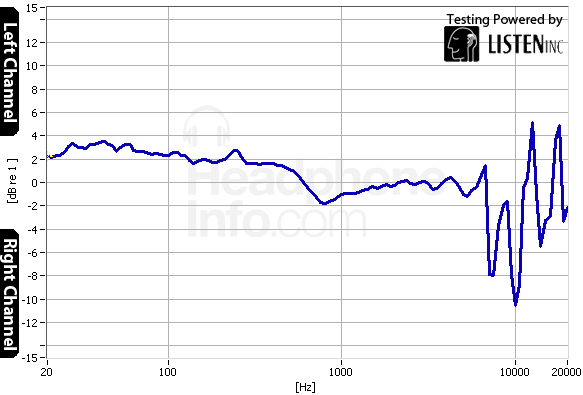
Maximum Usable Volume
{{section_header}}{{section.name}}{{/section_header}}
Here, we keep cranking up the volume and checking for distortion. What we're looking for is the level of output you can expect from these headphones before distortion reaches a noticeable level of 3%. In this case, the DS6000s were able to output 124.84 decibels before it succumbed to distortion. This is a good level, since any more and you'd damage your hearing, which we don't recommend, but the DS6000s should be fine if you like it loud.
Isolation
{{section_header}}{{section.name}}{{/section_header}}
For closed-back headphones, the DS6000s don't block out a lot of external noise. Like most open-back headphones, like the Sennheiser HD 555s, or Grado SR60s, the DS6000s provided some isolation from higher frequency sounds, but little or none from low frequency ones. Really, since the DS6000s aren't in-ear headphones, and they don't have active noise cancellation, we wouldn't have expected much better performance than this; if you're looking to listen to music or watch movies in a noisy room, get a pair of in-ear headphones like the Etymotic ER6is or a pair with active noise cancelling like the Bose QuietComfort 3s.

Leakage
{{section_header}}{{section.name}}{{/section_header}}
Strangely, it seems like the DS6000s create a one-way passage to your ears: they let external sounds in, but they don't let your music out. While you might hear more of the train going by your window than you would like, the person sleeping on the chair next to you won't be disturbed by your music, as we found in our tests that very little of the sound leaked out; only in-ear headphones did a better job of keeping your music private.
Short-Term Use
{{section_header}}{{section.name}}{{/section_header}}
Comfort is very subjective. We therefore highly recommend you try on any headphones before you buy them. In case you're unable to, you can use this section as a relative guide.
First of all, there really isn't much to customize before you slide these cans onto your ears. As soon as we did so, we noticed two things: the band felt tight, and the cups felt loose. Both these sensations are caused by the rubbery, internal band, which is held in place by springs. The springs and rubber hold your hair/scalp tightly. The springs also try to pull the cups upward, which creates an odd sensation for the first few minutes. If you try these on, wear them for a few minutes at least, so you can get used to the sensation. While the tight/loose sensation is never totally ignorable, it isn't torture either. Also, the cups are ridiculously comfortable. If it weren't for that tight dome grip, these headphones would've provided a very comfortable wear experience. As they exist, however, we thought they were slightly uncomfortable.
Extended Use
{{section_header}}{{section.name}}{{/section_header}}
From the 1-6 hour range, the sensation described above waned a bit as we got used to it. Considering our initial discomfort, we were surprised these headphones actually held up so well; after a few hours of use, they did not get uncomfortable or painful to wear.
Cable Connectivity
{{section_header}}{{section.name}}{{/section_header}}
The Sony MDR-DS6000 is wireless, so it seems obvious it'd get a zero in this section. We were surprised, however, that the setup didn't come with the audio cables necessary to hook the base station up to an output. The base station has phono ports (which accept a red/white audio cable), and an optical digital input (and matching output), so you'll have to pick up an appropriate cable along with these headphones.
Customizability
{{section_header}}{{section.name}}{{/section_header}}
There really aren't many options for customizing the MDR-DS6000 headphones. The cups have about 35º of a tilting arc, and can extend an additional 1.51 inches on either side. The cup movement is rather limited compared to the Bose QuietComfort series, whose cups can fully swivel. The band movement would normally be adequate, but since it's held taut, there aren't any other pad options included.
Portability
{{section_header}}{{section.name}}{{/section_header}}
These are not portable headphones. The headphones themselves are over-ears and non-collapsible, so they're bulky. In addition, the base station is a large, thick disk that takes up a lot of room.
Of course, bulk is the least of your worries. These things need to be plugged into an outlet at all times, via a gigantic plug. Needing to plug something in is pretty much the definition of not being portable.
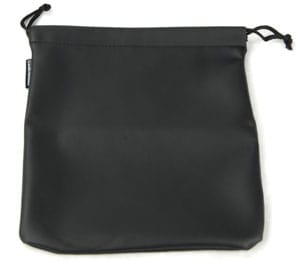
The pouch doesn't have any inner pockets or cord-managing features, so it's not particularly helpful.
Long story short: these aren't headphones you should bring out on a jog. They're meant for wearing around the house, and their design basically necessitates this limitation. Maybe you could jog with a generator.
Maintenance
{{section_header}}{{section.name}}{{/section_header}}
It's really hard to either clean or maintain these headphones. The cups don't come off, and there's no easy way to get at the sound element. If you have a special screwdriver, you can disassemble the band to some extent. In most cases, however, if something breaks, you'll have to buy new headphones.
Other Features
{{section_header}}{{section.name}}{{/section_header}}
Wireless
The wireless connection is initially established by putting on the headphones: the on/off switch is actually linked to the extension of the interior band (which we've discussed above). When you put them on, they'll try to establish a connection with the base station automatically. You'll know when they've found it, because they'll stop beeping intermittently. These headphones run on the 2.4 GHz frequency, so they could interfere with cordless phones and WiFi connections. We didn't encounter any problems with this while writing our review, but the possibility exists. The DS6000s do, however, actively change frequency to try and work around any interference.
In terms of performance, we were able to get good reception out to about 64 feet from the base station. This is pretty good, and should enable you to wander at least a room or two away from the base station. We also tested the battery life of the headphones' rechargeable battery by setting our test album to repeat, and letting it play until the battery dies. The DS6000s sang themselves to sleep after about 7 hours and 20 minutes. This is middling performance (many cell phones outlasted these in terms of music playback), but it should be enough for most users; it's enough for all but the longest movies or a day in the office. For those who go for marathon gaming sessions or watching entire seasons of Babylon 5 in one sitting, you might want to look at a set with a bit more longevity.
Surround Sound
The DS6000s feature digital surround sound. They are compatible with the following formats: Dolby Digital, Dolby Pro Logic II, DTS, and MPEG-2 AAC.
We gave a few test DVDs a listen using the cinema mode, and found the surround sound effect was a bit inconsistent. There were times when missiles or arrows would fly across the screen, but not create a strong sense of depth or movement. There were also a few times when two monsters standing shoulder-to-shoulder in dead center and grunting would elicit a strong left/right channel separation, which seemed slightly at odds with what was on-screen. We were impressed by how deep, boomy sounds like thunder or the footsteps of an orcish army sounded, however; they had a strong, earth shaking feel. Overall, it did create a good cinematic experience, but at times the surround sound either got carried away, or felt a bit lazy.
Battery
As wireless headphones, the DS6000s require a battery charge in order to function. Compounding this necessity for power, the base station needs to be plugged into the wall. Though neither of these restrictions should be a detriment for home users, it does mean you can't simply pick them up and use them elsewhere without taking the entire system with you. We discuss the battery life below.
Value
{{section_header}}{{section.name}}{{/section_header}}
The Sony MDR-DS6000 costs a lot for what it offers. First of all, it's obvious that these headphones aren't meant to be portable. Viewing them solely through the lens of home theater use, they provide some really nice features, such as wireless connectivity and digital surround sound. The wireless is nice and has decent range; good enough for doing chores or moving around a lot while you listen. If you're just planning on sitting and watching a movie, wireless connectivity loses a lot of its value (unless cables just bug you). Also, while the surround sound is definitely a great feature, it's value is diminished by otherwise mediocre sound quality. Surround sound with middling audio quality is like putting the cart before the horse, only you make the cart look really fancy so no one notices your horse only has three legs. Overall, while these headphones don't really do anything special, their $300 price tag seems to insinuate that they do.
Conclusion
{{section_header}}{{section.name}}{{/section_header}}
The Sony MDR-DS6000 headphones bring wireless, surround sound cans to the home theater scene, but the price is steeper price than we'd like. These headphones seem to be aimed at a movie-watching audience, who will value the surround sound and not notice the distortion or odd frequency response. And, in some ways, this is the ideal environment for wireless connectivity, since most users won't notice the slight distortion and poor frequency response in the never-ending stream of explosions that most modern movies seem to involve.
While the DS6000s seem to mesh best with the mainstream home DVD-watching demographic, at $300 they seems to be priced a bit high. These are well worth considering if you're in the market for a set of wireless headphones, but it's also worth bearing in mind that there are cheaper sets of wireless headphones out there that have similar features.
Meet the tester
Mark Brezinski works on the Home Team, reviewing refrigerators, minifridges, dishwashers, washing machines, dryers, air conditioners, air purifiers, and fans.
Checking our work.
Our team is here to help you buy the best stuff and love what you own. Our writers, editors, and experts obsess over the products we cover to make sure you're confident and satisfied. Have a different opinion about something we recommend? Email us and we'll compare notes.
Shoot us an email